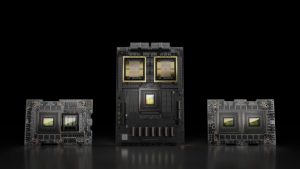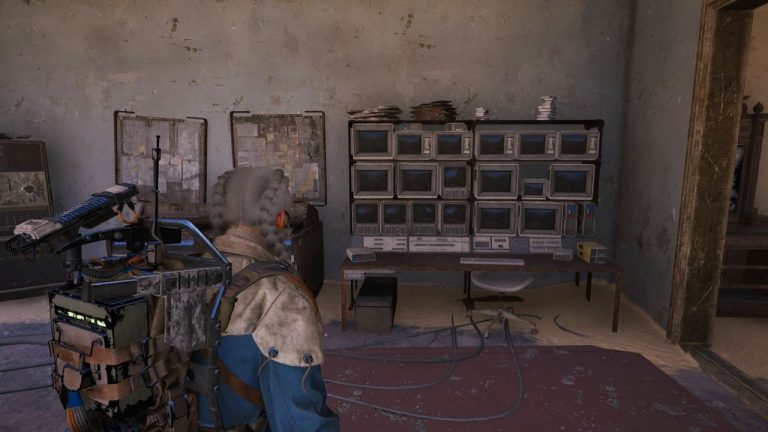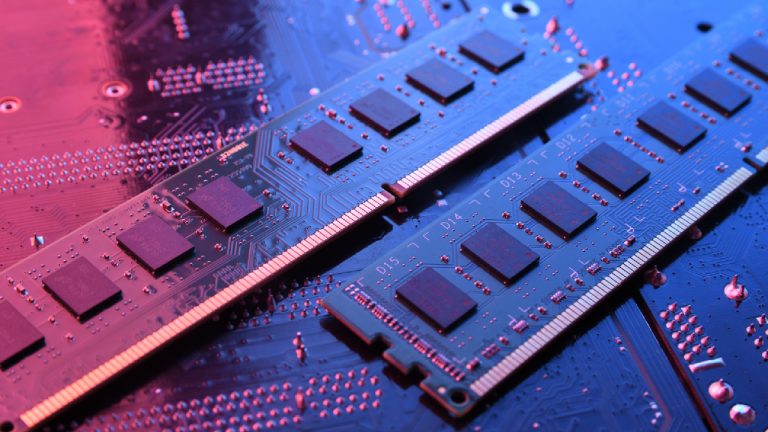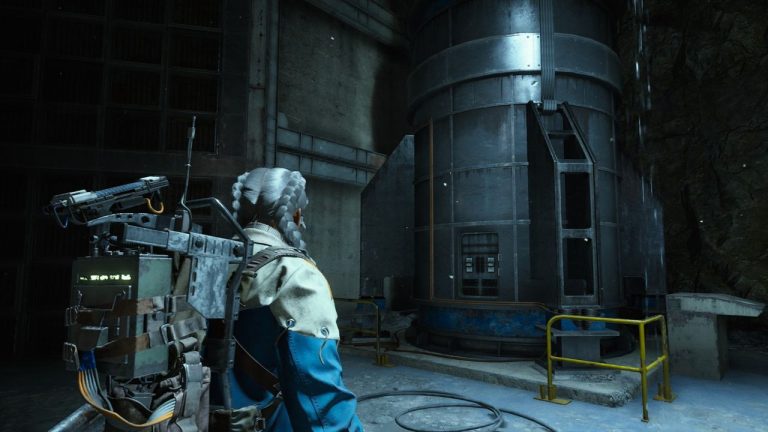(Image credit: Jacob Fox)
This week: I spent far too many hours gaming on the Lenovo Legion Go (making up for lost time, I guess). I’ve also been testing some snappy portable SSDs.
You ever get the feeling the world’s spinning faster than you can keep up? I certainly do. I mean, I take a measly four-year (partial) hiatus from gaming hardware to pursue a PhD and come back to a PC gaming landscape that’s barely recognisable.
Back in 2020 I headed PCGamesN’s hardware coverage and now I’m back covering the same kinds of wonderful gubbins at PC Gamer, but in between I escaped to the ethereal land of philosophy to try and learn the meaning of life and increase my number of brain wrinkles. I kept my toes dipped in hardware by freelancing, but things move fast in tech (who knew?).
I witnessed some changes from the sidelines with envy while others passed me by completely. Now I’m back in the game, I feel a little like a neolithic human who’s been dropped into Times Square.
I know, I know: “Times change and technology improves, so what’s new?” But I feel like the past four years have bucked the usual iterative trends and slapped some absolute bangers in their wake. I guess the difference between myself and some others is I’m only grasping these developments right now, all at once.
What froths up to the surface is, I think, a healthy portion of childlike wonder and an unhealthy dollop of retrospective FOMO, AKA regret. I’m kinda kicking myself for missing out on so much, but instead of sulking about it, I’m here to share a bit of positivity by reflecting on and marvelling over some of the changes in PC gaming technology that we’ve seen over the past few years.
Let’s kick off with monitors, shall we? Now, I’m a notoriously late adopter when it comes to certain things, including moving up in resolution (it took me until 2022 to admit 1440p might actually be a good idea). But when it comes to high refresh rates I always prided myself on being an early adopter. I had a 144 Hz monitor back before even 120 Hz was cool—well, before it was a mainstream recommendation, anyway. I remember trying to convince people that 144 Hz at 1080p is better than 60 Hz at 1440p (which it is, by the way).
(Image credit: Future)
So, slap my noggin and call me Humpty Dumpty, I’m genuinely flabbergasted that my monitor’s refresh rate is behind the curve of mainstream gaming monitor recommendations today. In fact, not only is my current 1440p 144 Hz baby behind mainstream recommendations, it’s behind cheap ones.
This, I think, is what’s surprised me the most about new PC gaming tech, and it’s what inspired me to write this needlessly gushy article in the first place. You see, during my Prime Day stint I reported on some of the best gaming monitor deals, and this is where I realised just how cheap decent high refresh rate monitors are these days.
We’re not talking my 144 Hz refresh rate, either. No, it looks like 165 Hz is standard now. For context, I paid about £220 (about $280) for my 144 Hz 1440p IPS monitor back in 2022. Now, for about $100 cheaper than this, you can pick up a 165-180 Hz 1440p IPS monitor. At the time of writing, for instance, the 180 Hz Acer Nitro VG271U is on sale for $190. This is just two years later.
Don’t even get me started on OLED panels. I tried one for the first time this year when I got my hands on the HP Omen Transcend 14, and I’m convinced OLED monitors are the way forward despite there currently being some problems with using them for PC gaming. I genuinely (cross-my-heart) didn’t know games could look so good.
(Image credit: Future)
(Image credit: Future)
(Image credit: Future)
(Image credit: Future)
Enough about monitors, though, what else have I missed? Oh, yeah, the birth of an entirely new way of playing video games: handheld gaming PCs. Sure, they technically existed before, but there weren’t any affordable mainstream options. Now, big brands are rushing to make their own ones the most affordable.
Being the luddite I am, when I heard Steam had made a handheld gaming PC back in 2022, my initial and embarrassingly persistent thoughts were (1) “How’s that going to work, then?” and (2) “How many PC gamers are really gunna buy that?”
As it turns out, a fair few PC gamers did. So many, in fact, that an entire handheld gaming PC industry flourished all around me while I marched on, oblivious, head-down and eyes set on the outdated games (hello Counter-Strike and Overwatch) that I was playing on my outdated monitor.
Well, I’ve tried a handheld gaming PC, now, and I can safely say that I see what all the hype was about. (I also get to enter the handheld scene after all the initial experimental wrinkles have been straightened out. Hurray for me!)
(Image credit: Future)
What else? Oh yeah, DLSS (and now FSR) frame generation. I mean, come on. I turn my back for what seems like two seconds and you go and make super-smart AI networks that can literally generate frames out of seeming nothingness. Which, combined with some similarly magical upscaling, can make for 2.5x the frame rates with no changes to end-user processing power.
Imagine I leave the room to grab a coffee and when I return you nonchalantly tell me you’ve learnt how to focus your mind to produce, apparently out of nothing, tiny pictures on your fingertips. “But don’t worry,” you tell me, “there’s no magic going on here, it’s all science, it’s just complicated stuff going on in the neural network of my brain. And it’s not produced out of nothing, it’s produced from the air in-between each finger.”
Okay you wizard weirdo, I don’t care, just keep doing what you’re doing because it’s cool and I like it.
(Image credit: Nvidia, CDPR)
Did I mention how AMD decided to start stacking things on top of its chips in an entirely new kind of processor structure that outmatches any previous design for gaming? AMD’s 3D V-Cache technology—found in its X3D CPUs such as the current best CPU for gaming, the AMD Ryzen 7 7800X3D—is a genuinely cool and radical solution to the cache bottleneck problem for gaming.
And there I was, at the time focusing only on Intel Alder Lake’s hybrid core strategy, which was, coincidentally, yet another 2022 development. (There’s definitely something Mayan going on with that year. Do we know what alignment the stars were in back then?)
I’d better not even begin thinking about some of the changes that might have occurred in other areas over the past four years, or I’m likely to get that FOMO again. I’ve already started to notice that gaming keyboards are becoming surprisingly well-built, which could put my old pro-custom and pro-office keyboard prejudices to shame if I’m not careful.
Heck, it’s starting to look like there’s overlap, now, with some of the best gaming keyboards making for mighty fine, high-quality and not-too-outrageous office clackers. You don’t even really need to add your own dampening, these days. And if you’re looking for switches better than Cherry MX ones, you might not have to crack open the third-party stores, either, because loads of keyboards today come with great stock switches.
(Image credit: Future)
Look at the past few years from a height and you’re liable to miss just how awesome all these developments are, not to mention how fast they’ve come about. But look too closely and you miss the wonder entirely.
I could be bitter about sleeping through all this, and at my baser points, when my lizard brain wins out, I am. But actually, I think it’s great that I can now submerge myself in a PC gaming landscape that sometimes seems two steps away from sorcery, where some seriously wondrous tech is ripe for the picking.
P.S. Note how I’ve not mentioned actual AI in any of this. That’s because AI is dumb, genuinely threatening, and can go do one. What? I never said I wasn’t bitter about anything.












